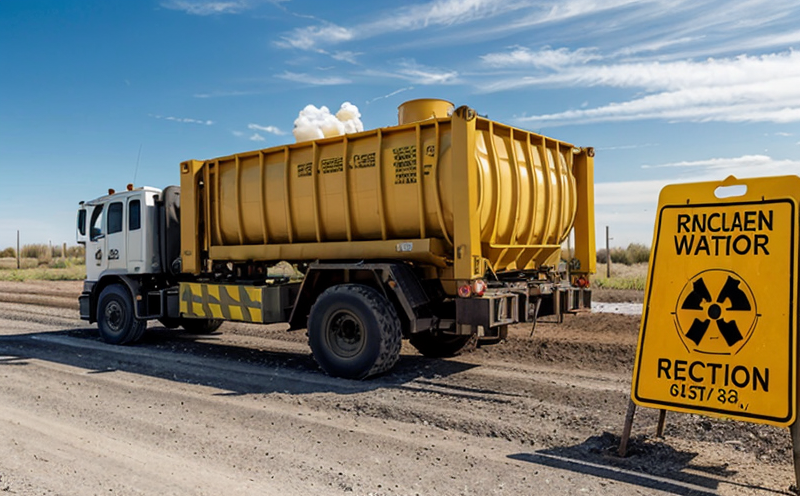ASTM C1720 Radionuclide Partitioning in Waste Matrices
The ASTM C1720 test method provides a standardized procedure for determining the partition coefficients of radionuclides between solid matrices and aqueous solutions. This is essential in waste management, especially for radioactive and nuclear waste, to ensure that radionuclides are accurately characterized within various waste forms such as cementitious materials, metal alloys, and other engineered barriers.
The test is conducted by leaching the specified waste matrix with an appropriate dilute nitric acid solution. The extract is then analyzed using high-resolution gamma spectrometry to quantify the concentration of radionuclides in both the solid and liquid phases. The partition coefficient (Kd) is calculated as the ratio of the concentration of a specific radionuclide in the solid phase over its concentration in the aqueous phase.
This standardized approach ensures consistency across different laboratories, which is critical for regulatory compliance and research purposes. ASTM C1720 covers the determination of Kd values for various radionuclides including 137Cs, 90Sr, and other actinides depending on the specific waste matrix being analyzed.
The significance of this test lies in its ability to predict how effectively different waste forms will retain radioactive materials. This information is crucial for designing effective storage and disposal systems that minimize environmental exposure risks. By understanding the partition behavior of radionuclides, stakeholders can make informed decisions about waste management strategies, ensuring public safety and regulatory adherence.
Understanding the leaching characteristics of radionuclides also aids in optimizing waste treatment processes, reducing contamination risks during handling and transport. Regulatory agencies worldwide rely on such standardized methods to evaluate the performance of engineered barriers used in nuclear fuel cycle facilities and radioactive waste repositories.
In summary, ASTM C1720 is a vital tool for quality managers, compliance officers, R&D engineers, and procurement specialists involved in managing radioactive and nuclear waste. The test helps ensure that waste management practices are both effective and compliant with international standards like ISO 5832 and EN 14962.
Why Choose This Test
- Standardized method providing consistent results across different laboratories.
- Relevant for regulatory compliance with international standards like ISO and EN.
- Predictive of the effectiveness of waste forms in retaining radioactive materials.
- Supports the design of effective storage and disposal systems minimizing environmental exposure risks.
The ASTM C1720 test is particularly advantageous because it offers a reliable means to characterize radionuclides within diverse waste matrices. This ensures that critical decisions about waste management can be based on accurate, reproducible data.
Competitive Advantage and Market Impact
- Innovation in Waste Management: Provides a scientific basis for improving the design of engineered barriers used in nuclear fuel cycle facilities and radioactive waste repositories.
- Predictive Capability: Allows stakeholders to anticipate potential issues related to radionuclide migration, enhancing safety measures.
The ASTM C1720 method has a significant market impact by enabling more robust and reliable waste management practices. It supports the development of safer and more efficient disposal methods, contributing to environmental protection and public health.
Use Cases and Application Examples
| Use Case | Description |
|---|---|
| Nuclear Fuel Cycle Facilities | Determining the partition coefficients of radionuclides to evaluate the effectiveness of waste forms in retaining radioactive materials. |
| Radiation-Sensitive Environments | Assessing the potential for radionuclide migration in environments where exposure could pose risks. |
| Application Example | Description |
|---|---|
| Cementitious Materials | Determining the partition coefficient of 137Cs in cement-based waste forms to ensure long-term stability. |
| Metal Alloys | Evaluating the retention capacity of metal alloys used in nuclear fuel cycle facilities for 90Sr. |





